Tactile Reproductions of 3D Computer Graphics via 3D Printing
Don't wanna be here? Send us removal request.
Text

Turn-of-the-Century Tactile Graphics Illustrate Nature for People Who Are Blind
#history#wood#carving#braille#illustration#paper#nature#blindness#animals#disability#Assistive#Media#Printing#Reproduction
4K notes
·
View notes
Text
Computer imaging tends to flatten our magnificent, multi-sensory, simultaneous and synchronic capacities of imagination by turning the design process into a passive visual manipulation, a retinal journey. The computer creates a distance between the maker and the object, whereas drawing by hand as well as working with models put the designer in a haptic contact with the object, or space. In our imagination, the object is simultaneously held in the hand and inside the head, and the imagined and projected physical image is modelled by our embodied imagination. We are inside and outside of the conceived object at the same time. Creative work calls for a bodily and mental identification, empathy and compassion.
Juhani Pallasmaa, The Eyes of the Skin: Architecture and the Senses
#quote#Juhani Pallasmaa#The Eyes of the Skin#Pallasmaa#architecture#architectural theory#senses#computers#digital#drawing#computer imaging#technology#creativity#design#making
130 notes
·
View notes
Photo


Natt Różańska – Your Skin Under Mine
Braille reads: the slope of your spine the arch of your back the curve of your hip
38K notes
·
View notes
Photo

Braille-Annotated Tactile, Manipulative Exploration In-The-Round of The Conic Sections; Sections unfold on hinges to reveal the slicing planes: Ellipse, Parabola, Hyperbola with raised-text and braille captions.
#3D#Printing#CAD#CAM#Braille#Tactile#Math#Abstract#Sculpture#Geometry#Conic#Sections#Manipulative#stereolithography
4 notes
·
View notes
Photo

47 notes
·
View notes
Link
#Fernando Codá Marques#André Neves#Willmore conjecture#Proof#Surface#Manifold#Geometry#Minimal#Geodesic#Mathematics
1 note
·
View note
Link

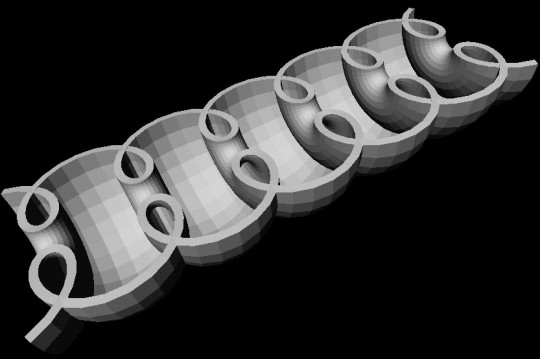





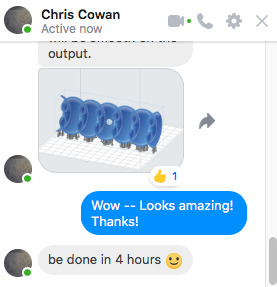
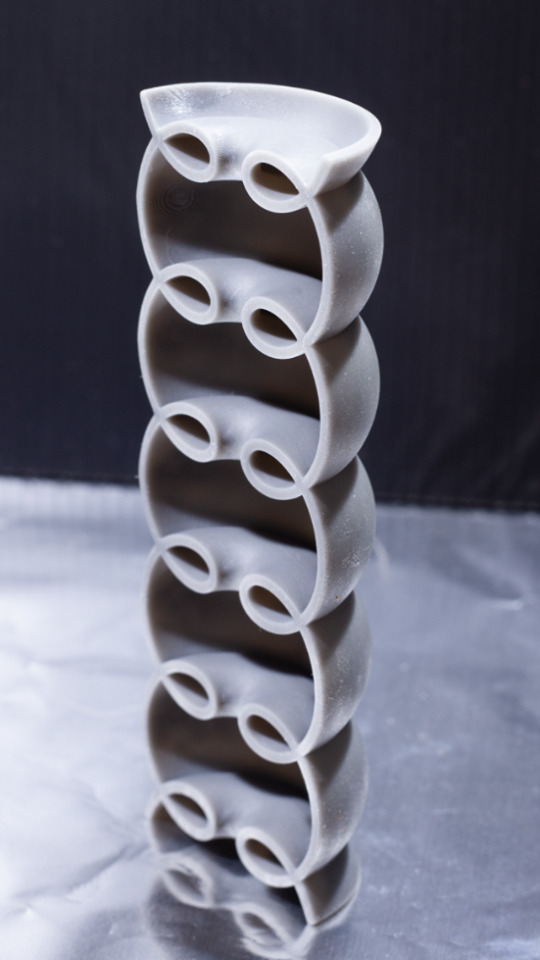

#Nick Schmitt#UMass#Amherst#Math#Visual#GANG#Geometry#Delaunay#CMC#Nodoid#3D#CAD#CAM#Sculpture#Chris Cowan
6 notes
·
View notes
Photo
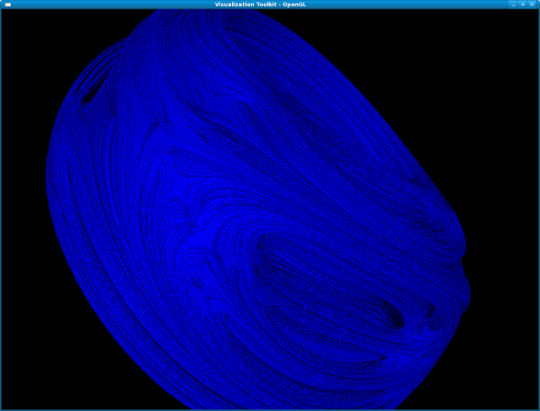
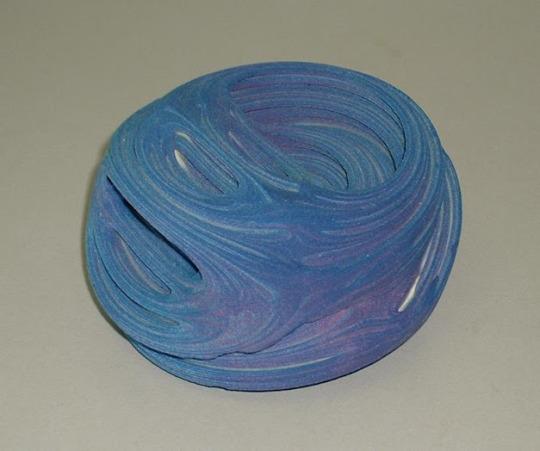
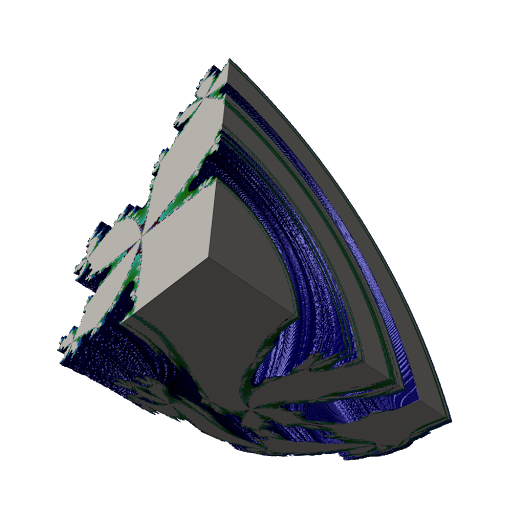
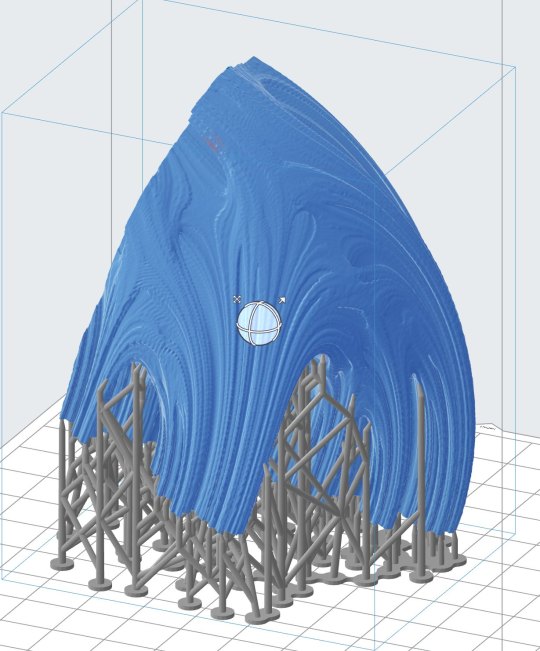


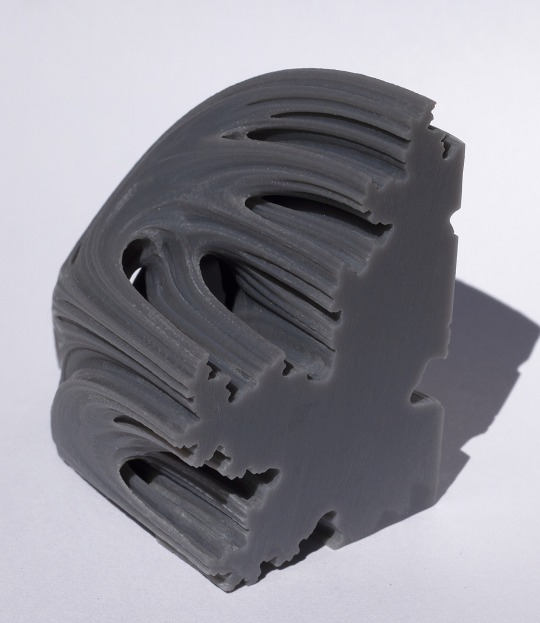
Builds by Z Corp Z 510 Color 3D Printer at the Visualization, Media and Imaging Laboratory (VMIL) of the Imaging Technology Group (ITG) Beckman Institute University of Illinois at Urbana-Champaign and on FormLabs by CKC1010
#4D#3D#Fractal#Deterministic#Quaternion#Complex#Volume#Voxel#Julia Set#cadrage#camp camp#Printing#Z-Corp#FormLabs
6 notes
·
View notes
Video
tumblr
3 notes
·
View notes
Photo
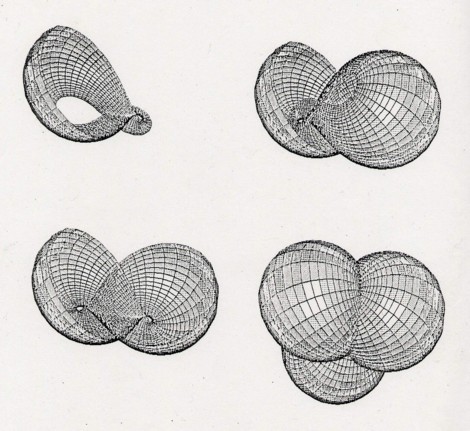
Image by Ivan Sterling
The Wente Torus As concretized by Stewart Dickson
Research sponsored by Computer Science and Mathematics Division of Oak Ridge National Laboratory, managed by UT-Battelle, LLC for the U.S. DOE under Contract No. DE-AC05-00OR22725
Is a compact immersion of the torus which has constant mean curvature. Previous to 1984, the only known surface having this property was the sphere. Henry Wente, who discovered this surface is on the faculty of the Department of Mathematics, University of Toledo.
Other images and discussion of the Wente Torus and other Constant Mean Curvature surfaces can be found at the following URLs:
The Wente Torus Page at The Mathematical Sciences Research Instutute.
The Wente Torus Page at the Geometry, Analysis, Numerics and Graphics (GANG) Center, University of Massachusetts, Amherst
#Ivan Sterling#Henry Wente#CMC#Constant Mean Curvature#Mathematical#Surface#Properties#Computer-generated#3D#Visualization#Sculpture#Printing#CAD#CAM
3 notes
·
View notes
Photo


Here are some images I have made of the surface, from data supplied by Ivan Sterling.
#Henry Wente#Ivan Sterling#CMC#Constant Mean Curvature#Mathematical#Surface#CAD#CAM#Stereolithography#Sculpture#Computer-Generated#Images#3D#Modeling#Printing
1 note
·
View note
Photo
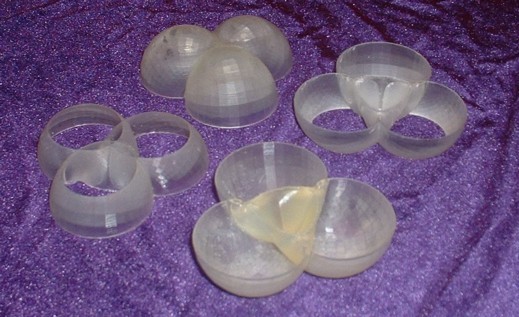


A group of halves and sections of the Wente Torus rendered in Stereolithography at the Rapid Prototyping and Manufacturing Institute, Georgia Institute of Technology, Andrew Layton, Program Manager.
#Ivan Sterling#CMC#Constant Mean Curvature#Mathematical#Surface#Wente Torus#Hwnry Wente#Torus#CAD#CAM#Stereolithography#Sculpture#Computer-Generated#Modeling#3D#Printing
1 note
·
View note
Text
Tactile Math
by Stewart Dickson
November 9, 2000
In November of 1999, Professor of Mathematics, George Francis contacted me, asking me if I would be interested in making physical sculptures from the Optiverse movie, which Professor Francis, John Sullivan and others had made and shown in 1998.
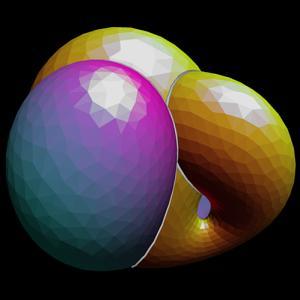
(Image by John Sullivan, UIUC)
The Optiverse shows an entirely new way to turn a sphere inside out without cutting it. This operation is called eversion.
The Optiverse is in part based on another sphere eversion developed by Bernard Morin.
One difference between the Optiverse and Morin's eversion is that the Optiverse uses a minimal surface bending energy constraint, imposed by simulating the surface in Ken Brakke's Evolver.
Bernard Morin is a mathematician, blind since childhood, former Fellow at the Institute for Advanced Study, Princeton University.
Professor Morin was interested in the ways in which the Optiverse differs from his Morin eversion, but he could not understand the difference, because he could not see the computer-rendered Optiverse movie.
I created four eight-inch models from frames 0, 9, 12 and 27 of a 54-frame clip of the computer-generated geometrical data from the Optiverse. The objects were built courtesy of 3-D Systems, Santa Clarita, California.

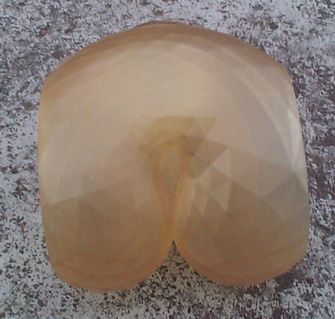

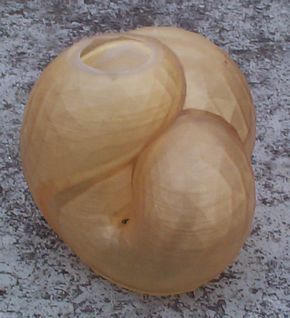



I presented these models to Professor Morin during an International Colloquium on Art and Mathematics in Maubeuge, Northern France on September 22, 2000.
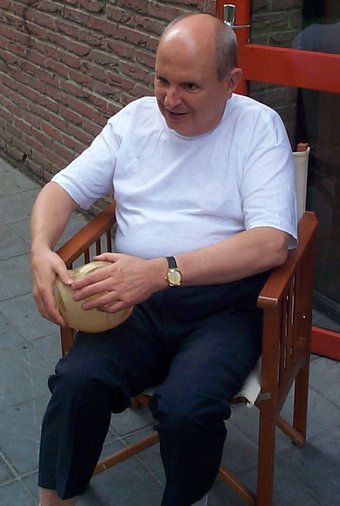
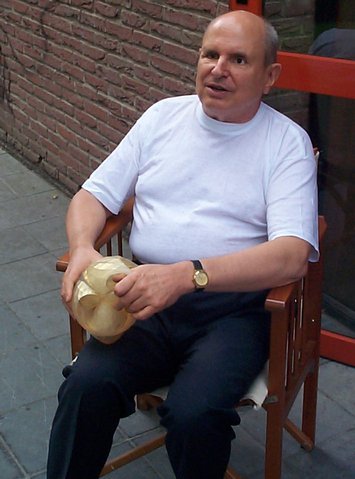
(Photographs by John Sullivan, UIUC)
In 2003, Terry Hoppe of the Stratasys service bureau built full models of Tope 9 (near half-way) and Tope 27 (near gastrula) of the Optiverse in ABS thermoplastic.
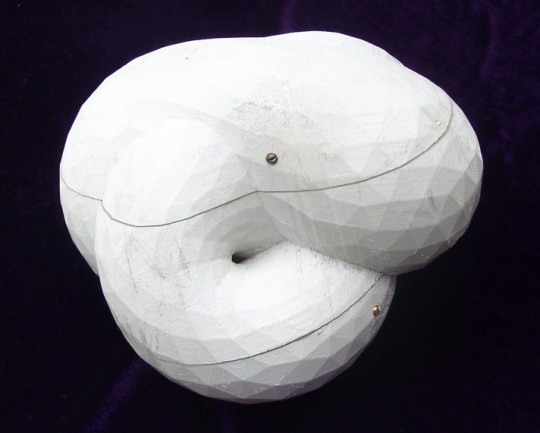

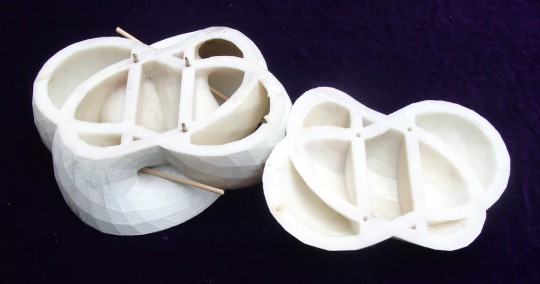

I had a meeting with Bernard Morin during INTERSCULPT 2003 at which time he requested a version of the Optiverse surfaces sliced and with registration pins to afford reassembly. I have created a prototype of this model using the FDM ABS version of Tope 9.
#Stewart Dickson#George Francis#John Sullivan#Bernard Morin#Sphere Eversion#Mathematics#Animation#Visualization#3D#printing#Sculpture#Stereolithography#FDM#Tactile#Optiverse
1 note
·
View note
Video
Here’s the virtual gallery exhibition of Tactile Math! from 2008
tumblr
See also http://botty-shelly.tumblr.com http://tactile-math.tumblr.com and
http://www.ifp.illinois.edu/~sdickson/G4G8/G4G8_Dickson_Notes.html
#Math#Art#Sculpture#Geometry#Surfaces#Differential#Morph#Rotate#Turntable#Costa#Topology#Enneper#Klein#Etruscan#Venus#Buddhist#Knot#Endless#Loop#DORIS#Torus#Calabi-Yau#4D#Zoetrope
5 notes
·
View notes
Photo
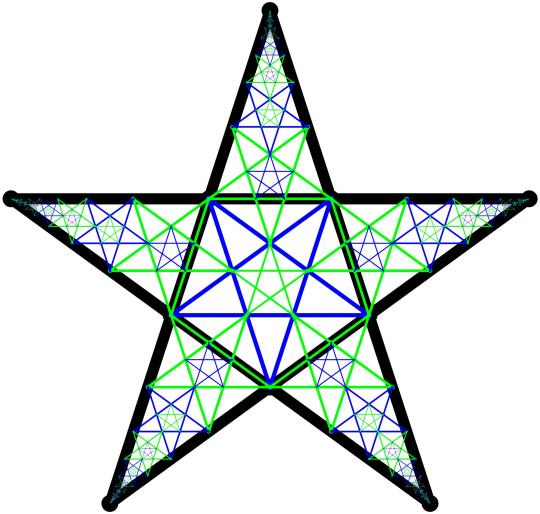

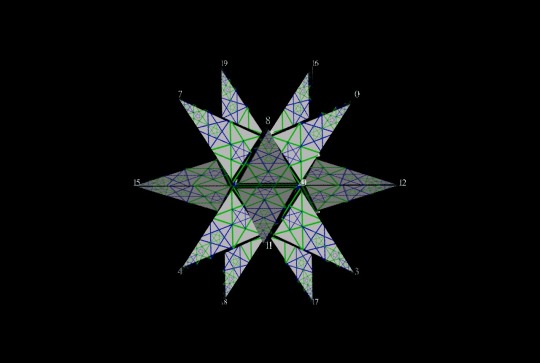


Pythagorean Great Stellated Dodecahedron in Open Inventor and Paper
Inspired by
This Week's Finds in Mathematical Physics (Week 265) John Baez http://math.ucr.edu/home/baez/week265.html 14) James Dolan, Pythagorean pentagram, http://math.ucr.edu/home/baez/pythagorean_pentagram.jpg
#Geometry#Construction#Paper#Folding#2D#Printing#Color#Card#Stock#Recirsive#Graftal#Infinite#Detail#Pythagorean#Pentagram#Great#Stellated#Dodecahedron#Icosahedron#Wood#Filament#Nylon
1 note
·
View note
Photo

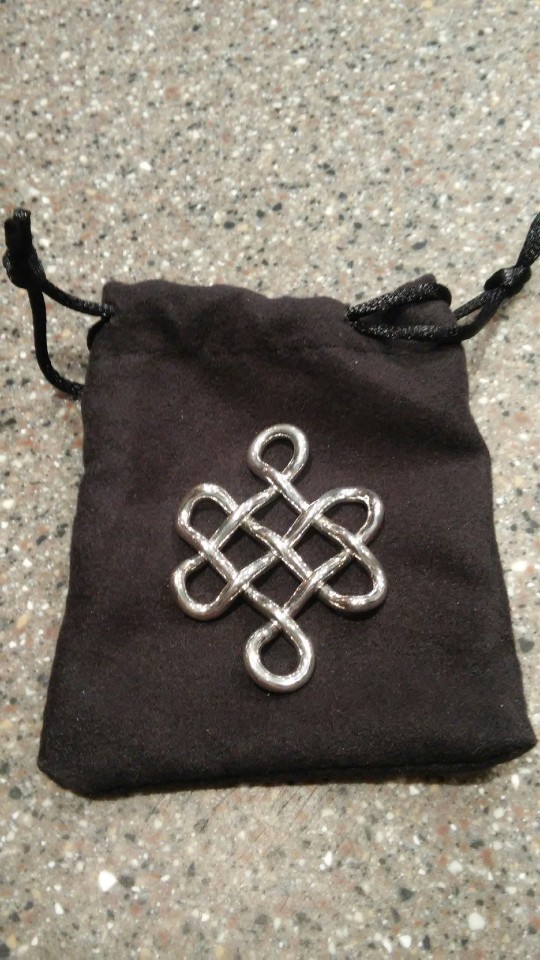
Buddhist Endless Knot in Shapeways Polished Silver 1-1/2" X 1-1/2" http://www.shapeways.com/shops/MathArtSPD
#Buddhist#Endless#Knot#China#Symbolism#Computer#3D#Graphics#Animation#GIF#Modeling#Aided#Design#CAD#STL#file#Shapeways#Cast#Silver#Polished#Precious#Metal#Sculpture#Digital#Art
0 notes
Photo
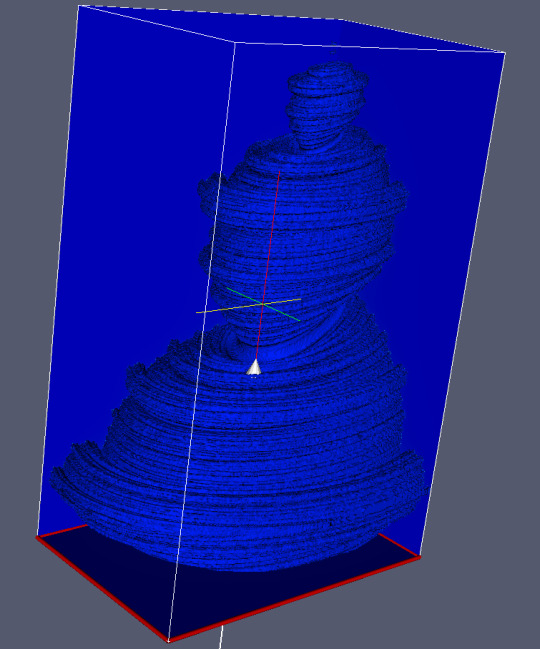
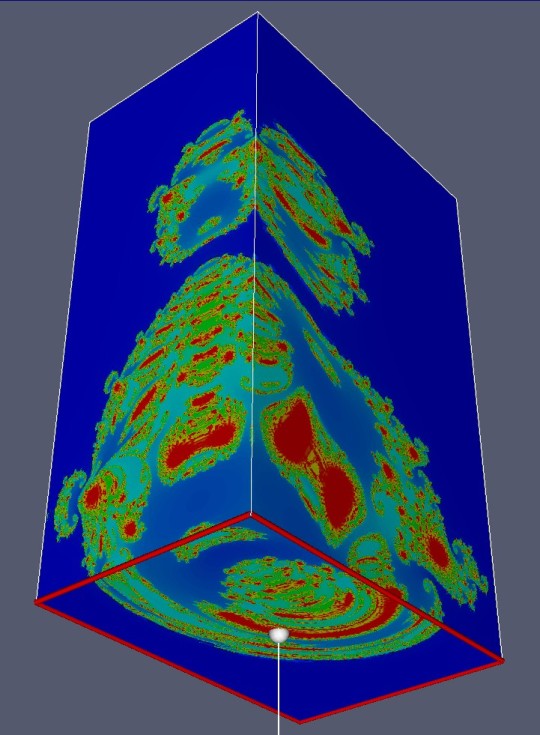

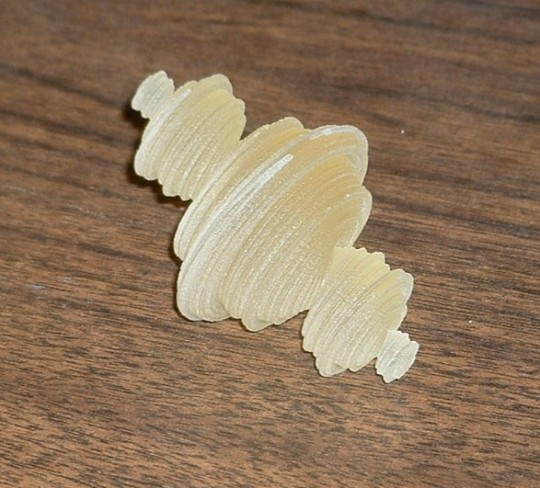
These images show a 512 x 320 x 320 x 8 bit per pixel volume convergence map of the procedure Z -> ei R Z2 + e-i R (-0.745,0.113,0.01,0.01), R -> 0 where Z is a complex quaternion four-vector of the form (a, b i, c j, d k), where i2 = j2 = k2 = ijk = -1. The pixel volume represents the three-space spanned by (1, i, j, 0).
Software/Hardware used: Quaternion Julia Set calculator by Stewart Dickson; Kitware's Visualization ToolKit; Apple dual-2.7GHz G5 PowerMac
The Isosurface of the Quaternion Julia Set rendered in Fullcure 720 acrylic photopolymer resin on a Stratasys Eden 333 PolyJet 3D printer at the Western Carolina University Center for Rapid Product Realization.
#Quaternion#Julia#Set#4D#3D#Fractal#Printing#Computer#Digital#Mathematical#Visualization#Sculpture#Voxel#Volume#Pixel#Rendering#Deterministic#Dynamical#Chaotic#System
1 note
·
View note